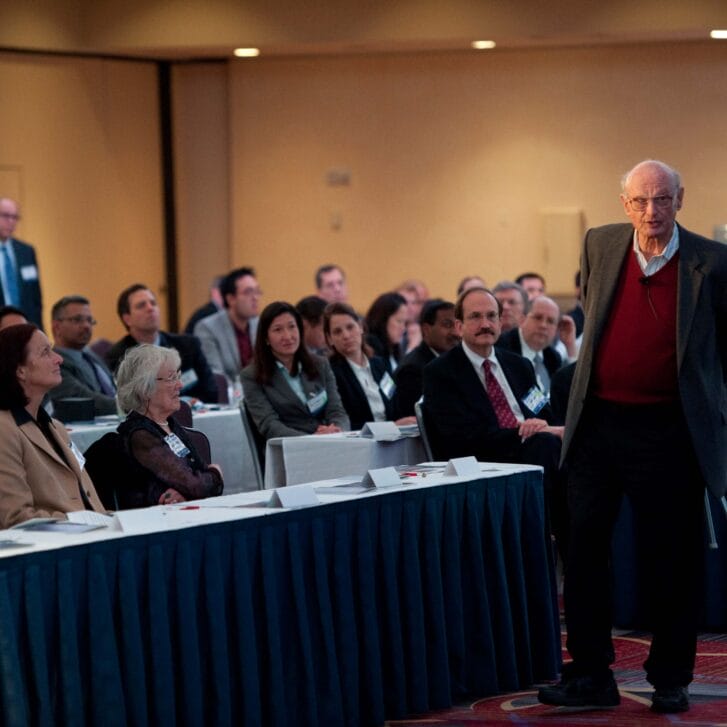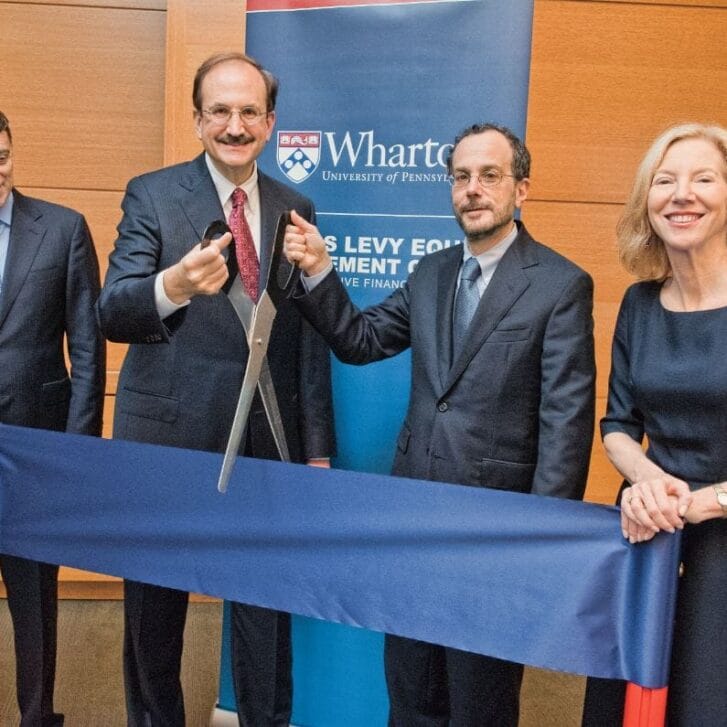
Employee A has worked as a manager at a major consumer products company for the past 20 years. He realizes – as he sees the swirl of young and technologically adept colleagues coming and going – that his future is not secure.
Employee B has seven years of varied corporate experience as an up-and-coming software manager. He fields about a call a day from recruiters offering salary and stock options packages that always seem to be rising, and enjoys being in the driver’s seat with few long-term obligations.
Employee C works for a “professional employer organization” and is currently leased to a mid-sized medical products manufacturer that has decided it no longer wants the expense and liability of its own employees. Instead, the company’s top executives have contracted to rent an entire staff, thus eliminating commitments, maternity leaves, benefits and pensions.
Whatever happened to taking a corporate job, working your way up the chain of command over many years, being rewarded for your loyalty with steady promotions and pay increases, and retiring at age 65 after a long career with one company, or at a minimum, one industry?
There’s no denying that jobs – how we find them, what they mean to us and what they mean to our employers – are not what they used to be. Today, a quiet revolution is underway in the employment world that has all the elements of a good drama: abrupt power shifts, big money, risk and uncertainty, and, for some, payoffs galore.
Peter Cappelli, professor of management and director of Wharton’s Center for Human Resources, is fascinated by the changing landscape of employment, and by many accounts is the only academic in the nation to so closely study and chronicle its evolution.
Over the past two years alone, Cappelli’s research has tackled issues including downsizing and performance, market-driven approaches to employee retention, and the so-called shortage of information technology workers (see sidebar). On a broader level, a spring 2000 research paper, called Managing Without Commitment, offered an abbreviated glimpse of Cappelli’s 1999 book, The New Deal at Work: Managing the Market Driven Workforce (Harvard Business School Press), the first book of its kind to reveal just how much things have changed between employee and employer.
“The traditional employment system of secure, lifetime jobs with predictable advancement and stable pay is, by most accounts, dead – even in large organizations,” says Cappelli, 43.
Consider the following:
- Staffing firms that provide “leased” employees to companies are booming, including Professional Employer Organizations, which take on nearly all the legal obligation of being an employer for their clients.
- A recent survey of employee expectations found that job security ranked only fifth out of 10 attributes in importance.
- Employee poaching, even team poaching, has become a common recruiting method. The head of Coopers & Lybrand’s Madrid office, for instance, recently took his entire, 90-person team to Ernst & Young.
- The online recruiting industry has become a $3 billion powerhouse that includes sites such as Monster.com, which has 6.3 million resumes and nearly 500,000 job postings on its site.
 How and when did all of these changes occur? The death of the man in the gray flannel suit began in the 1980s, when the nation was taken aback by a phenomenon that had previously affected only blue-collar jobs: widespread layoffs. Company after company, citing the need to “restructure,” fired thousands of white-collar, mid-level managers throughout the decade. It was a time of fear for many professionals, who realized for the first time that despite their education and years of experience, they were now perceived as expendable. A recession in the late 1980s fueled the insecurity, and resentment and mistrust toward corporations grew.
How and when did all of these changes occur? The death of the man in the gray flannel suit began in the 1980s, when the nation was taken aback by a phenomenon that had previously affected only blue-collar jobs: widespread layoffs. Company after company, citing the need to “restructure,” fired thousands of white-collar, mid-level managers throughout the decade. It was a time of fear for many professionals, who realized for the first time that despite their education and years of experience, they were now perceived as expendable. A recession in the late 1980s fueled the insecurity, and resentment and mistrust toward corporations grew.
In the early-to-mid 1990s, data show that white-collar job displacement continued, particularly for long-time employees, even as the economy took off. Cappelli cites a Conference Board survey showing that 84 percent of large companies polled acknowledged efforts to articulate a new relationship with employees, one explicit in its intent to eliminate long-term commitment to employees and the responsibility for identifying and developing their skills.
But by the end of 1996, labor markets had significantly tightened and the “deal,” as Cappelli calls it, had once again begun to change. This time employees had the power, as firms realized their problem was not getting rid of workers, but finding and keeping them. Companies such as GTE Corp., for instance, shifted toward marketing themselves as “employers of choice” with perks and professional development opportunities designed to lure and keep talented employees.
“What’s important about all of this back and forth is that it’s now clear that employment has become market driven,” Cappelli says. “And the most important connection employees today have is not to their employer, but to the market.
“So the new employment relationship is an uneasy dance,” Cappelli says. “It’s an open-ended relationship that is constantly being shaped by the pull of the market. When labor markets are slack and jobs are more difficult to find, employees become more loyal to their employers and assume most of the pain of a restructuring. When labor markets tighten, the tables turn: employee commitment drops and employers are more willing to invest in employees again.”
For all of their angst during the 1980s, today’s employees appear to have adjusted to the new realities of the employment market better than their employers, according to Cappelli’s paper. He cites the recent survey of employee expectations that found that “secure employment” ranked only fifth out of ten attributes in importance, after interesting work, open communications, opportunities for development and realistic performance management. Employers, meanwhile, still struggling against a tight labor market, listed commitment and trust as most important. And another survey by Towers Perrin revealed that most employees believe that lifetime employment is not realistic or even desirable. It also found that middle managers now see little difference between themselves and hourly workers when it comes to their relationship with their employer.
Problems for Management
Not surprisingly, the “new deal” has brought problems and perks to both employer and employee.
Employees with the right skills have options galore during tight labor markets. But generalists and mid-level managers who have not kept up with the technology boom or who lack a specific, unique talent face a much more tenuous future.
Employers, meanwhile, have great flexibility to quickly rearrange the skills of their workforce based on market forces and can limit long-term obligations and costs, Cappelli says. But they also face a host of new challenges, from employee poaching to cultivating loyalty in a work-force that’s quickly learned to put its own interests first.
The practice of employee poaching from competitor firms, for example, has become rampant in recent years. A Wharton study of 70 leading life insurance companies found that competitor firms are considered the most important source of new recruits, and team poaching, as in the case of the Coopers & Lybrand executive, has also become common.
What have companies done to counter this trend? “Golden handcuffs” – compensation or stock options packages that can only be accessed after a certain time period – are one way companies have tried to keep employees from hopping from offer to offer. But recruiting firms have more recently responded to these packages with “golden hellos” – programs that simply buy out the incentives.
In the end, compensation-based retention tools are only a marginally effective solution since they are easily copied by competitors. “The better option is to create unique ties to the organization that can’t easily be duplicated,” Cappelli says. North Carolina-based SAS Software has an annual turnover of about 4 percent, while the industry average for software is six times higher. Cappelli cites the firm’s ability to create a strong community among employees with meaningful perks and benefits, such as discounted prices for home sites and childcare, as the reason.
 Similarly, firms with a strong interpersonal focus also struggle less with retention issues. A team orientation and work climate that fosters respect of and among employees seems to result in lower turnover. “Employees more easily develop commitments to other people than companies, so the best way to keep them is to develop good social relations at work between employees. On the other hand, organizations that focus largely on tasks and task performance at the expense of relationships have higher turnover,” Cappelli says.
Similarly, firms with a strong interpersonal focus also struggle less with retention issues. A team orientation and work climate that fosters respect of and among employees seems to result in lower turnover. “Employees more easily develop commitments to other people than companies, so the best way to keep them is to develop good social relations at work between employees. On the other hand, organizations that focus largely on tasks and task performance at the expense of relationships have higher turnover,” Cappelli says.
Commitment and loyalty – shown in a wide-ranging body of research as vital to organizational success – are also casualties of today’s new employment contract. In fact, today’s combination of empowered employees and diminished commitment is one of the biggest dilemmas modern companies face, Cappelli believes.
 What can companies do to increase commitment among this mobile and wary workforce? Cappelli’s paper makes several recommendations, including giving employees autonomy, showing genuine appreciation and support for employees, making employees feel needed and that they are making an important contribution, and offering training and other investments in employees.
What can companies do to increase commitment among this mobile and wary workforce? Cappelli’s paper makes several recommendations, including giving employees autonomy, showing genuine appreciation and support for employees, making employees feel needed and that they are making an important contribution, and offering training and other investments in employees.
“Very simply, people are more committed when there is reciprocity,” Cappelli says. “When employees believe their employer is supportive of their well-being, they are more committed. The more valuable they feel, the more they see themselves as attached to the organization. The more their employer invests in them, the more they will feel a sense of reciprocal responsibility.”
The Human Capital Management Industry
 Cappelli’s most recent research interest involves the human capital management industry – made up of search/recruitment firms and staffing firms that provide temporary or leased employees. In a few scant years, the industry has become a $95 billion powerhouse that’s expected to double in size within the next five years. Nonetheless, this young field – barely 10 years old – is still relatively unknown.
Cappelli’s most recent research interest involves the human capital management industry – made up of search/recruitment firms and staffing firms that provide temporary or leased employees. In a few scant years, the industry has become a $95 billion powerhouse that’s expected to double in size within the next five years. Nonetheless, this young field – barely 10 years old – is still relatively unknown.
Cappelli attributes much of the industry’s rapid growth to technology. The booming online recruiting sector includes a slew of job-related services, from job boards to recruiting services to support services, and has allowed employers to interface directly with potential applicants, dramatically lowering the cost of employee searches. Similarly, job seekers have a host of free online options.
Already a $3 billion industry that’s expected to grow sevenfold within the next five years, the online recruiting industry includes powerhouses such as Monster.com, which has more than 6 million resumes on its site – more than 5 percent of the U.S. adult online population. Cappelli points out that on its peak day (Monday), Monster estimates more than 4 million job searches take place on its site, and the company reports it is growing by 15,000 resumes a day.
Beyond the job boards, however, are a dizzying variety of online firms that offer new ways to match workers and jobs. Some provide ways for applicants and employers to supply portfolios of information such as videos of interviews. Others offer extensive tests to measure the skills of applicants.
“These online developments have important implications for finding jobs, for employment relationships and more generally, for broader society,” says Cappelli. “Again, we see that these trends make it easier for employees to be less committed to their employer because it’s so quick and easy to find jobs online. On the employer side, 90 percent of North American companies now recruit candidates on the web, with 60 percent posting their job openings online.
“And the monopoly of information about jobs and careers that employers once had has been eliminated. Companies like Vault.com offer inside information about what jobs in specific companies are really like. Salarysource.com tells you what you should be making in a particular job in a particular location. All of this adds up to a fascinating change,” Cappelli says.
Another interesting development is the growing use of staffing firms that provide temporary or leased employees, including Professional Employer Organizations, relative newcomers that take on many of the legal obligations of being an employer for their clients. Temporary help firms, meanwhile, “create an opportunity and a market for part-time work,” Cappelli says.
“When you look at the growth in all of these different areas that make up the human capital management industry, you realize that everything needs to be examined,” he adds. “So little research has been done, even on industries like executive search that have been around for awhile.”
Ultimately, Cappelli hopes for a Wharton-based research center that will focus on the mushrooming human capital management industry. He believes now is the time, as the new market-driven world of work and several years of tight labor markets have, finally, made employment a crucial issue for corporate America.
“The mainstream business community has historically paid no attention to this whole area of employee management – it’s been a topic that people paid lip service to but nobody really cared much about,” Cappelli says. “And in a slack labor market, you can be a terrible manager and you still get things done because everybody’s glad to have a job and they’re scared of losing their job. But in a tight labor market like the one we’ve had for many years this stuff really starts to matter. And now people are interested – out of necessity.”
Not a Traditional Academic
Cappelli joined Wharton in 1985, serving as chair of the management department from 1995-1999 and as director of the Center for Human Resources from 1990 to the present. His work, he admits, is not traditional scholarly research. “It’s a bit of a stretch from the traditional academic work, which is organized around academic themes rather than practice,” he says.
Cappelli grew up the son of a local attorney in upstate New York and always assumed that he, too, would become a lawyer. But when his father died young while Capelli was an undergraduate at Cornell, he decided against a career in law. He chose instead to go graduate school at the University of Oxford, where he studied labor economics. The 1970s were an interesting time to study labor economics in England, because research was conducted by going out into communities to collect data, rather than relying on government databases, as is the practice today. “I think those early experiences account for my more topic-driven approach to my work,” Cappelli says. “I don’t really fit neatly between the various disciplines – economics and sociology and psychology.”
His interest in recent employment trends happened largely by accident. Cappelli was working with two co-authors on a 1997 book called Change at Work that focused on the corporate restructuring wave of the 1980s and 1990s. As his work on the book progressed, Cappelli caught a glimpse of the “new deal” – the unfolding of a market-driven employment system.
But his co-authors wanted to maintain the book’s initial focus, and so Change at Work didn’t address the fundamental changes underway. Cappelli’s next book, The New Deal at Work, tackled the issue head on. “As I got into it, the story really did seem right to me. And with this my research got pushed more in the direction of what was actually happening in the world,” he says. “Since then, the issues have been exploding around us with this tight labor market and are so obvious and important. Even though nobody else seems to be looking at these questions, they are so important that I feel driven to keep looking at them.”
Cappelli: IT Workers Need Better Handling
IT workers are out there, but companies don’t know how to find them, pay them or manage them.
It’s common for companies across America to complain about a short age of information technology workers. The reality, however, is that there is no widespread lack of workers, but a shortfall in the ability of companies to recruit IT employees, to assess their talent and make their jobs rewarding enough to keep them from quitting, according to a recent study by Peter Cappelli.
The unhappy truth, the study points out, is not that there are few people available to do IT work, but that once they are hired they are often poorly managed. In addition, many IT jobs are ill designed and boring, leading many employees to become dissatisfied and leave.
“What’s really unusual about this situation is that so many people are quitting the IT profession,” says Cappelli. “The number of workers who quit the programming field every year, for example, exceeds the number of new programming jobs. It’s peculiar to have a field that’s thought to be so hot, yet where so many people are leaving in droves.”
In the study, prepared for McKinsey & Co., Cappelli finds that employers are not entirely mistaken in feeling confronted by a lack of IT workers – even if the shortage amounts to little more than what an economist would view as a temporarily tight labor market. There are indeed many occasions when it is hard to find the right people to fill jobs, especially high end IT positions such as software architects and sophisticated programmers. And it is frustrating that organizations cannot hire more people than they find – even after spending a lot of time and money on searches and offering prospects prevailing wages.
Such frustration can leave companies desperate for both an explanation and a solution.
As for an explanation, companies tend to assume that new workers must not be entering the field and that this is preventing the market from adjusting to what appears to be skyrocketing demand, according to Cappelli. But what often turns out to be the case is that an unusually large part of the demand for new hires focuses on just a few key workers where bidding wars raise wages and search costs sharply.
In addition, employers frequently seem unwilling to consider hiring older, experienced IT workers. The attention that employers give to recruiting college graduates disproportionately focuses on just a handful of jobs. Moreover, many employers treat IT employees poorly and under value their contributions to companies. For instance, programmers typically find themselves working in isolation on fragmented tasks that do not allow them to see the larger purpose of a project or to interact with other people. It may be of no small consequence that the offices of IT employees are often in a company’s basement, the study notes.
If there is a crisis in the IT labor market, Cappelli says, the crisis is a narrow one. But it would be wrong to believe that the cause of the crisis is an inherent shortfall in the supply of workers. The supply of college graduates trained for IT careers has been responsive to market conditions, even though that supply lags demand by several years and can create problems for the labor market.
Cappelli makes several recommendations to companies seeking to understand and address the issues surrounding the so called shortage. For one, employers must improve recruiting practices. Companies should take some of the resources spent on trying to hire small numbers of people with top academic credentials and instead develop ways to predict which employees will succeed. At present, most companies have no systems in place to make such assessments, the study notes. As a result, firms set pay rates based on average expected performance, which probably leads them to underpay their best people and overpay the least competent.
“An employer that could do a better job of judging talent would have no difficulty attracting the best work ers because it could afford to pay them a lot more,” Cappelli says.
In addition, companies should redesign IT jobs, especially program ming positions, to reflect their true contribution to the business. The shabby treatment of workers contributes to high turnover rates and can lead to higher costs, since IT workers may demand more wages in exchange for doing tasks that offer few rewards of other kinds.
“IT has a culture of its own, and it’s a culture that’s usually detrimental to keeping workers happy,” Cappelli says. “It’s amazing that IT management practices simply run counter to how human resources people feel employees in all other kinds of jobs should be managed. Organizations should apply basic management principles to keep IT people satisfied and engaged in their jobs.”
Finally, organizations should learn to measure job performance better and link rewards to performance. If the most talented people are essential to the IT industry, they should be identified and paid top dollar. Better performance management may also reduce the prejudice against older workers, which is widespread in the IT sector, despite laws against age discrimination.
This story first ran in Knowledge@Wharton, the School’s online source for business news and analysis.

























